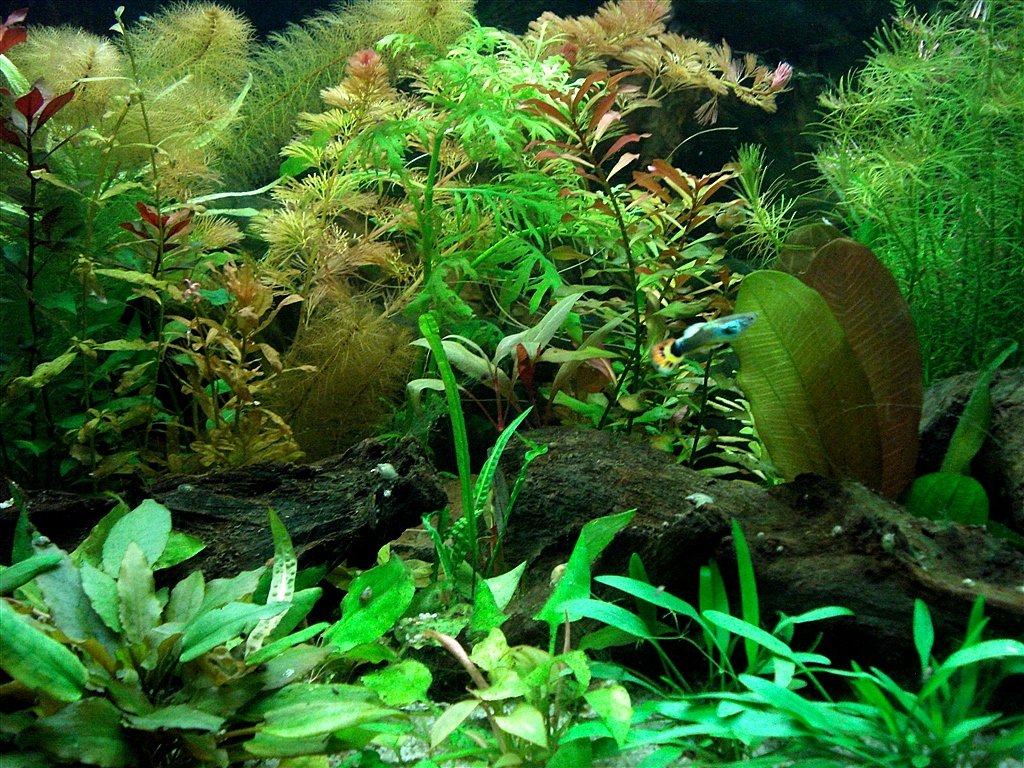Art XIII
How to make use of the Genetics to breed beautiful guppies (4)
RUBRIEK: Guppy Kweek English Translation
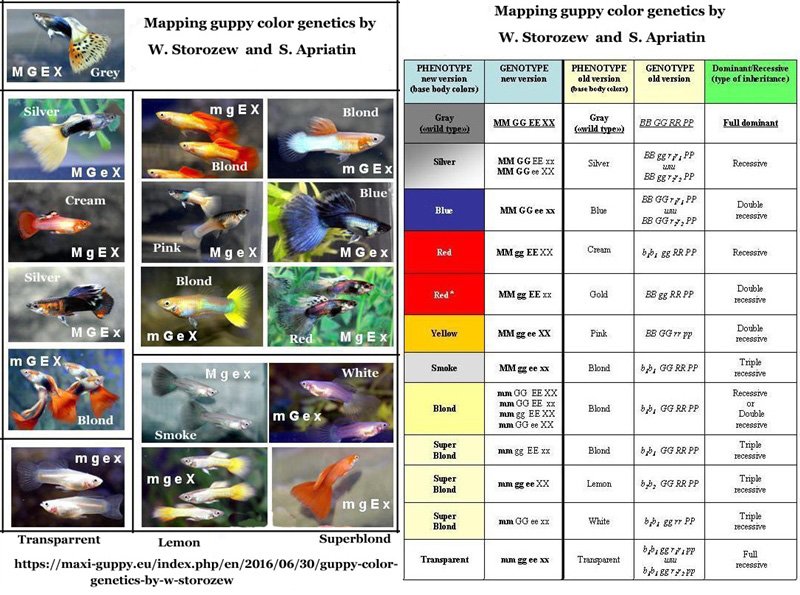
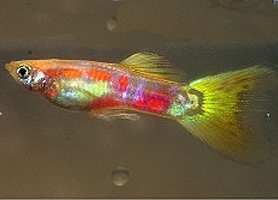
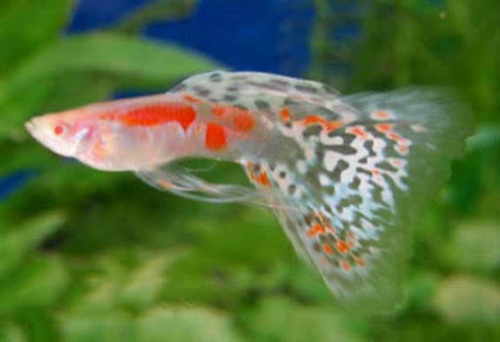
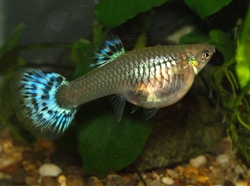
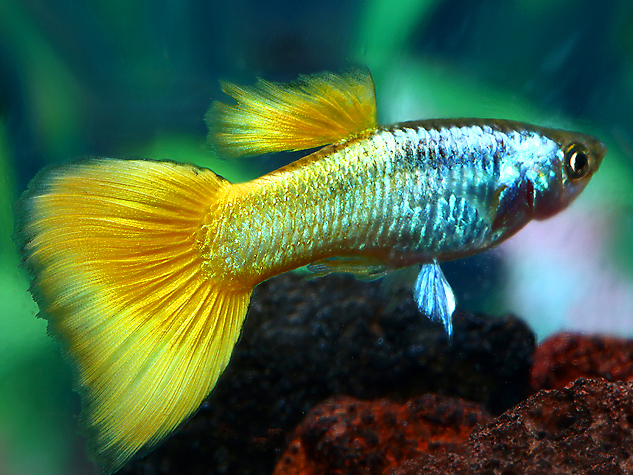
One of the recent publications on guppy genetics dates from 2009 by the Russians W. Storozew and S. Apriatin . They also make an initial distinc-tion in 4 different primary colors : the presence or absence of black pigment or melanin (M and m); the presence or absence of blue pigment or guanine (G and g); the presence or absence of red pigment or carote-noid (E and e); the presence or presence of yellow pigment or lutein (X and x). Partly to bundle and concentrate all that information about the gup in a clear table (see above with examples). Partly to be able to place all those different crosses between guppy strains more clearly within the known laws of heredity of Mendel.
To this point I can follow, but unfortunately I have to drop out of the next step - relocating to even renaming old terms - this is too "forced" to try to conform a reality to a new theory. So I would say: well thought out and a good attempt, but I am not willing to redefine and name old, established terms for the necessity of this theory, nor to overlook its gaps. One major discrepancy: albino is missing in the list, and is therefore missing in the line of thought "without melanin". The ambition to believe that we can only tell the full guppy story with 4 allele pairs testifies to a misguided ambition to try to tackle a complex reality with a fairly rudimentary plan. Note that one actually distinguishes 5 and not 4 (like it is here the case) color cells: black (melanophores), yellow (xanthophytes), reflective (iridophores), red (erythrophores) and white (leucophores).
I am obliged here to return to the essence of coatings and pigments . In part, these belong together , therefrom the "traditional", initial view, that certain pigment cells lie in certain skin layers, and depending on the type pigment cells that lie there, and would determine the color (see figure below).
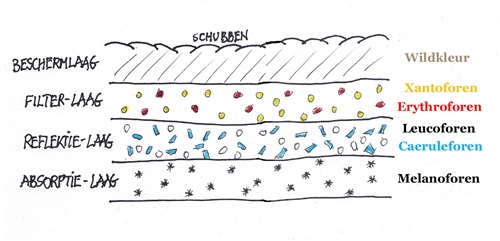
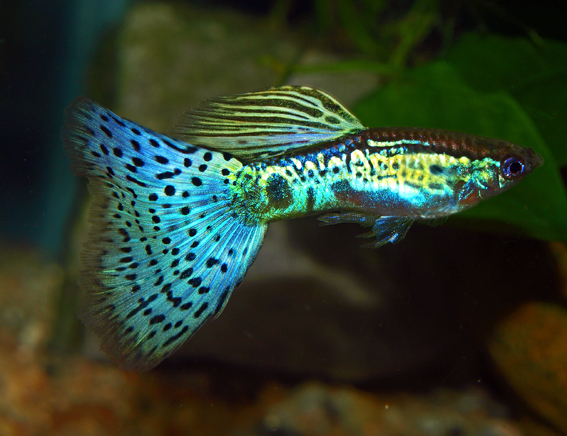

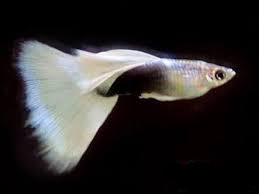
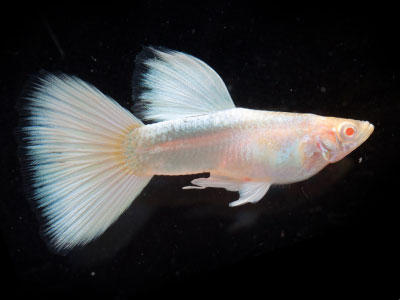
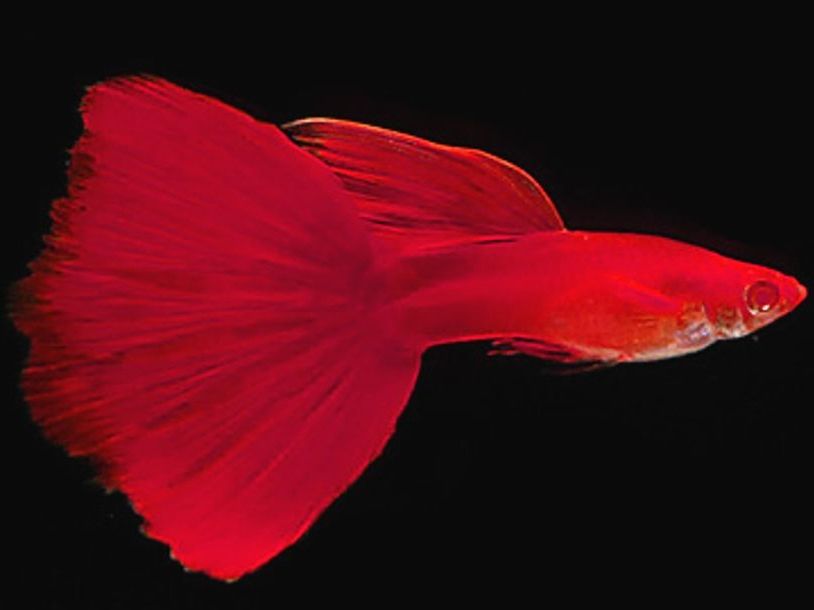
The first layer is always a protective layer against all possible attacks and accidents in the "outside world"; but it must also have some permeability and transparency . The normal situation is that of the wild color , but there are also other variations that do something with the "scales" (such as bronze), or do something with the (in)transparency ( such as Stoerzbach). The second layer acts more like a filter , in which red and yellow colors are captured by the red and yellow color cells in them. Through the third layer, the light is received further, but specific to the iridophores that are located there, more like a reflection . The white and blue (in Greek there is no name for "blue, and" guano "reminds me too much of manure, so I only gave the blue color cells a Latin name for blue)-cells are working a bit like "mirrors", so that this layer colors as a kind of weather-shine . As a shine with in the wild color, but sometimes also more specifically as metallic, blonde, gold or platinum . And the fourth and last layer finally is an absorbent layer, so that the colors are absorbed and fixed against an black background, provided by the black color cells. If a fish does not have this melanin, as is the case with an albino , those colors will slip away and look like some kind of haze . At lutino that is a little bit less, because there is a little bit of melanin in stock.
An interesting question - which you may also have wondered - is this: does albino occur with the half black ? Yes and no. Uh? No, because in the ab-sence of melanin, the fish will only show a grayish shade. And yes, because the signature of the tuxedo (up to a color layer at the top) remains slight visible, even if the fish is colored white (see example on the right), or red, ... Therefore, half-black albinos are often used in the breeding of mono-chrome guppies. It indicates that patterns are "engraved" through all layers like some kind of tattoos . Well, those are the scientific facts. Now it is time to "forget" those again. Why? Because drawing too much attention to those color cells is counter-productive for a general understanding. After all, these color cells do not "make" these colors, but execute what the gene script -the DNA- code - prescribes. So, to make a direct connection and understanding, it is better to give the genes responsible for example for how many blue color cells will be produced, just the name "blue" as well. And ditto for all the other colors.
And to use a more prosaic representation of the different cover layers, as clothing layers that we also use: a coat; a jug or a shirt, a t-shirt or a rug; and finally underwear. Guppies such as a half black or a stoerzbach look as if they are wearing a thick coat, possibly with a scarf (stripe), hat (koi) or gloves (dumbo). Blonde guppies, on the other hand, look like they've taken off a few layers of textiles, and look like summer. And albinos are, as it were, completely gutted, swimming around in their underwear. On the left a few examples to illustrate this imagery.
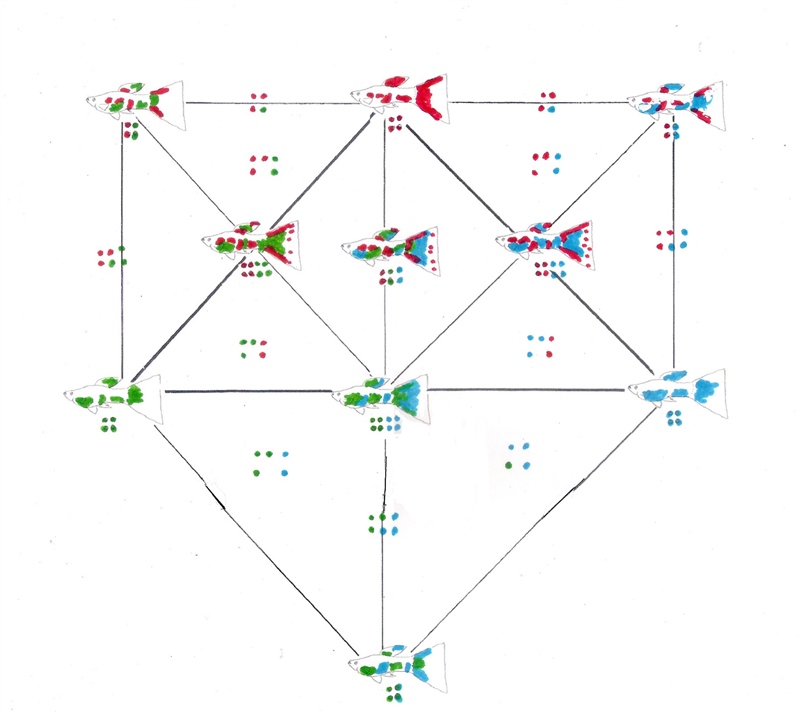

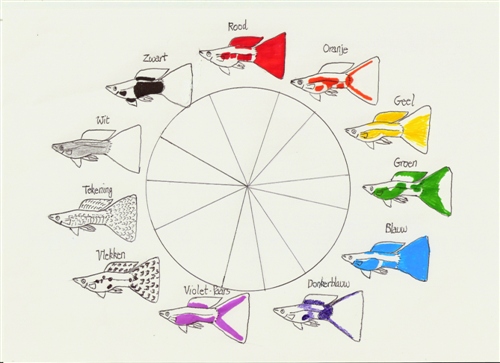
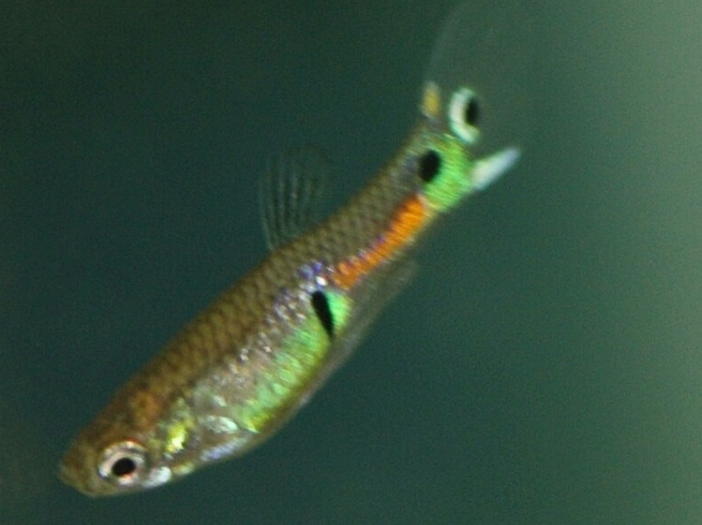
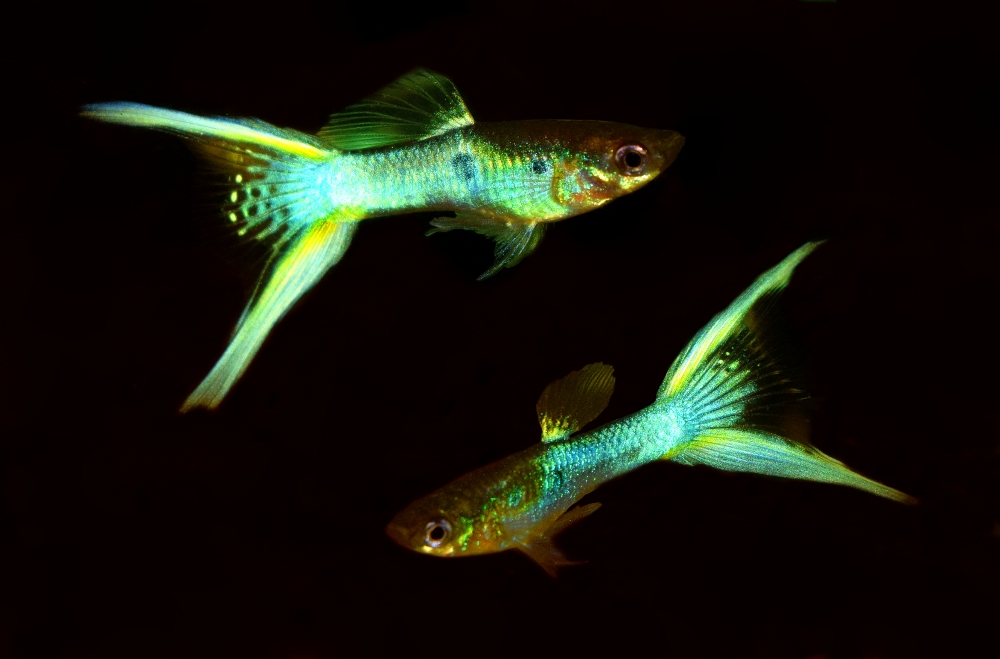
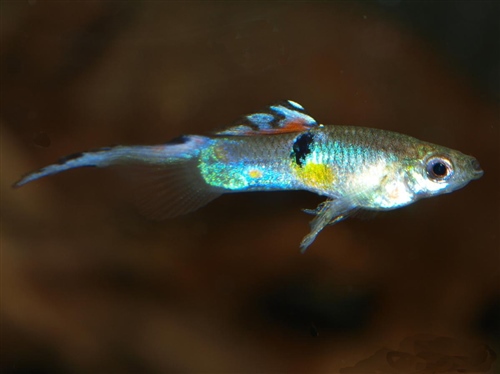
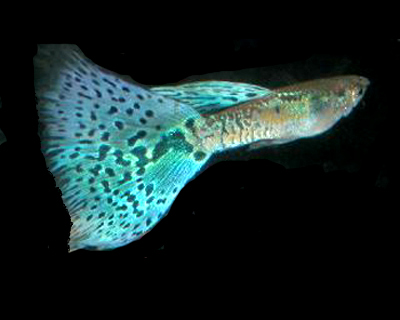
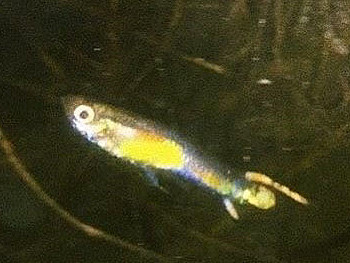
Last but not least, I have to note that the 4 allele pairs - as I already noticed at the beginning of this page - are actually far too little compared to the REAL number of gene pairs involved. To be able to set up the genetic ID of a gup, provided that all colors and patterns, at least 42 allele pairs are active, and together with the "exceptional" top layer variants, one is already over the 50. Plotting this immeasurable number of combinations on a 50-polygon is already close to the figure of a sphere . If you make a cross-section of this, you get a circle on which all colors and patterns blend together. This allows us to better understand the concept of my favorite drawing, which is shown in small on the top left and can be found in a larger format on page 2.
Back to the heart of the matter: I have here now worked out the number of combinations above with 3 colors for 4 allele pairs. This number of combi-nations is still manageable, and can be arranged on the (spatial) figure of a tetrahedron : a tetrahedron consisting of 4 triangles connected to each other. In each triangle are the combinations between two colors, with the homozygous unicolor fish in the vertices, and the two-colored fish in the centers. The figure is not completely drawn correctly, because the triangles must be equilateral, and the "unfolded" tetrahedron should again be a triangle, but this figure would take up too much space here.
Below: the number of combinations for this time four colors for 4 alleles pairs. The number of possible combinations has increased exponentially. I tried initially to include these in a figure, but this was impossible: in that puzzle work one skips a few, or a few are noted down twice. Therefore I finally did it from the "point of view" of one color systematicly . Exactly the same can be done for the 3 other colors, but one can understand light that this excess would not provide a clear picture.
If you ever had the whim to do that, you can figure that out yourself, but more important is the figure below that with the summary of all that figure. Here one can arrange the number of combinations according to the (spatial) figure of a cube . With the heterozygous types in one main color - green, red, yellow or blue - on 4 surfaces; on 1 side the two-colored fish; and on the last side the three and four colored fish. I added the percen-tages, calculated according the total number of combinations.
Note that only 2% of the number of offspring will have an "interesting" combination. We have to cut this in half again, because 50% of them will be females for whom it will be much more difficult to detect that, so that in the end only 1% will remain. And again 1% of that 1% or 1/1000 may introduce something new. That is much closer to what one can expect when setting up a guppy culture. That is why the chance of a possible mutation and innovation is much greater in professional nurseries, where one works with thousands instead of tens.
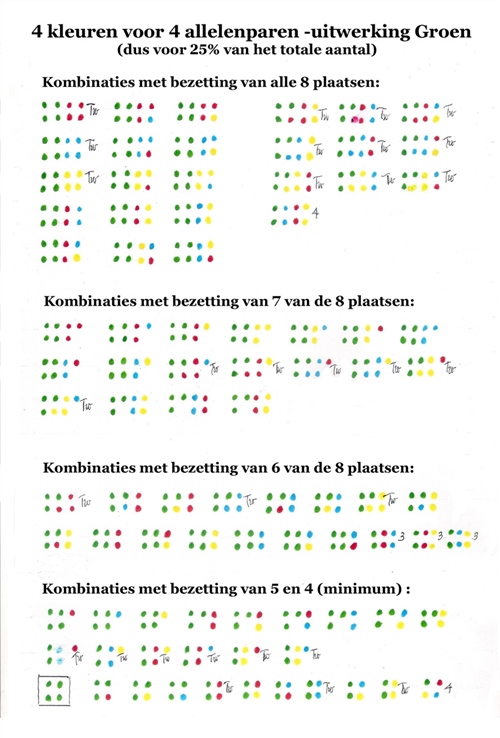
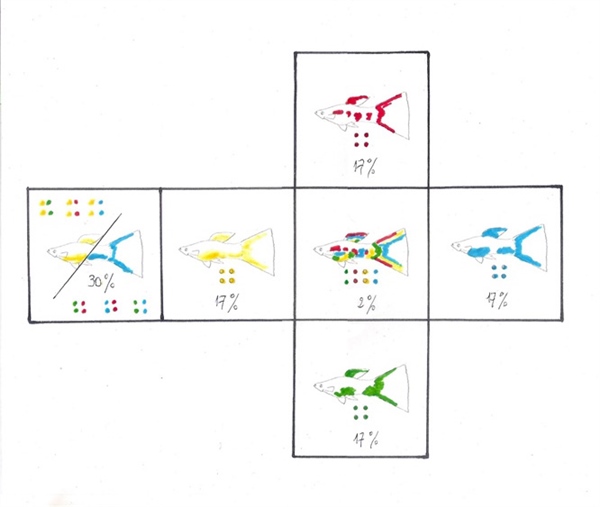
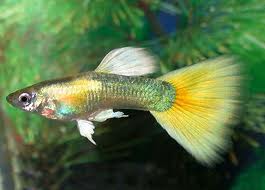
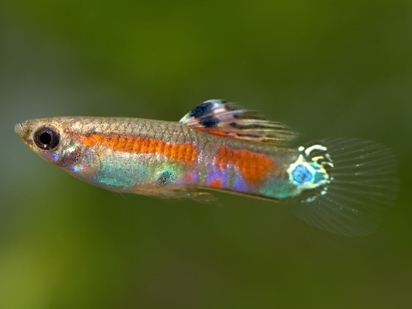
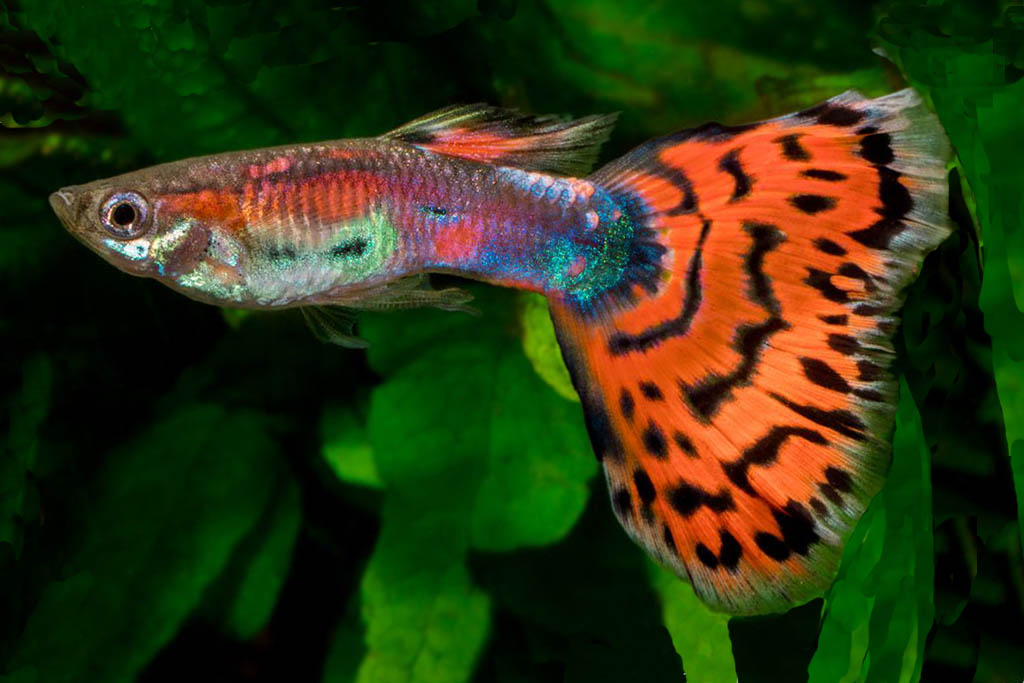


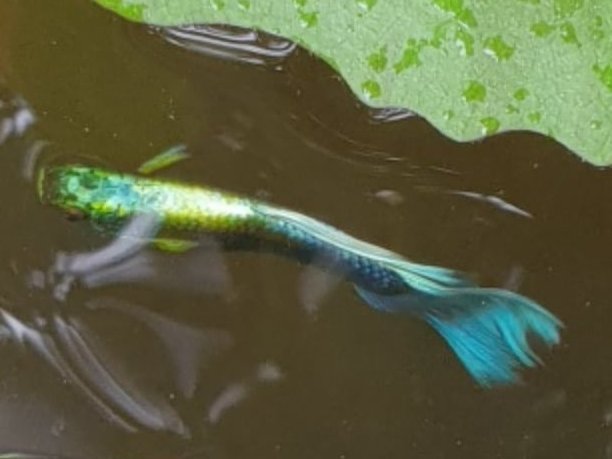


Having said all this: this can help to adjust the expectations somewhat (more realistically). Do not start growing guppy from the goal of growing new guppy strains soon, then you will run straight into disappointment. Very often one sees the proud owner of what he thinks are "special" guppies, on social networks - and on Facebook there are a LOT of such guppyclubs- asking the question: "Which strain is this?" Just as many times he gets an answer from an already existing and nominated tribe. Or to completely puncture the illusion: he is told that he has "bastards", or has fish that are imperfect and not worth a penny.
As far as I'm concerned, no problem. One has to grow guppies that one likes, and because one likes them. The fanatics of guppy clubs can often turn out to be smarty and annoying types, who swear by the 10 command-ments of their standards, and who are difficult to talk with, if one does not immediately accept those. And I don't feel the need to participate in competitions with "my" fish and win "prizes".
I have very different motivations. And it is not at all wrong to have other motivations than money gain, or to pursue honor and glory as a renowned breeder. I remember how as a child I could spend hours looking at an aquarium for guppies, sword carriers or platys. So much so that people wondered if I was "normal" and not autistic or something: which child would sit motionless in front of such a tank instead of playing outside? Until people noticed that I could also watch the fish in a stream for hours.
As a young adult, my aquarium-filled room was a sanctuary where I could safely retreat to when life in the difficult outside world became too troubled for me, and where I could find calmness again by "forgetting" all the rest: only the here and now existed, which happened as a spectacle of color before my eyes. The zen of holding guppies as it were. And as an elder it requires my constant interest to seek out and discover nature and its secrets, the essential nature of things and their mutual connection. That is what fascinates me. This is what inspires me. That's what I do it for. And you, what are you doing it for?
